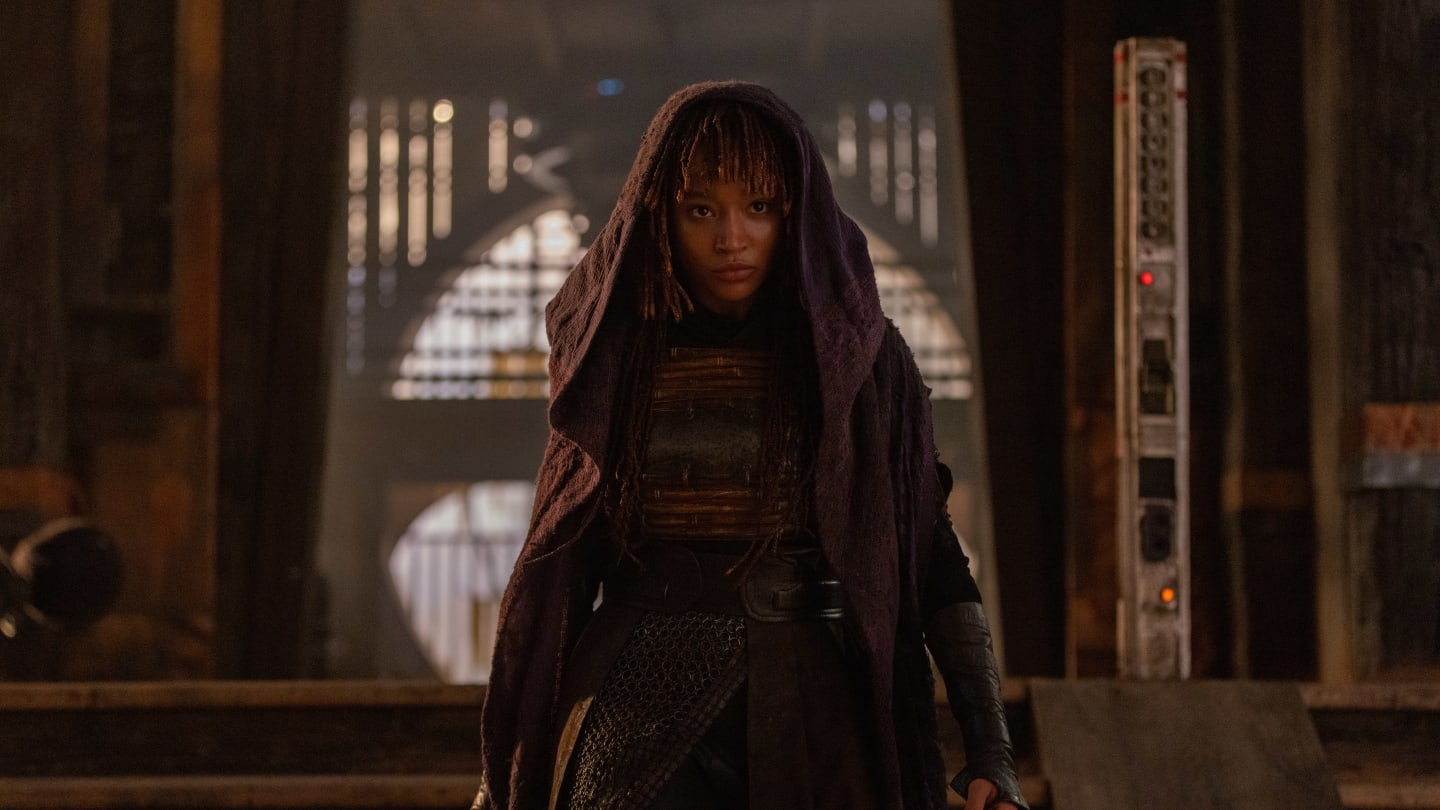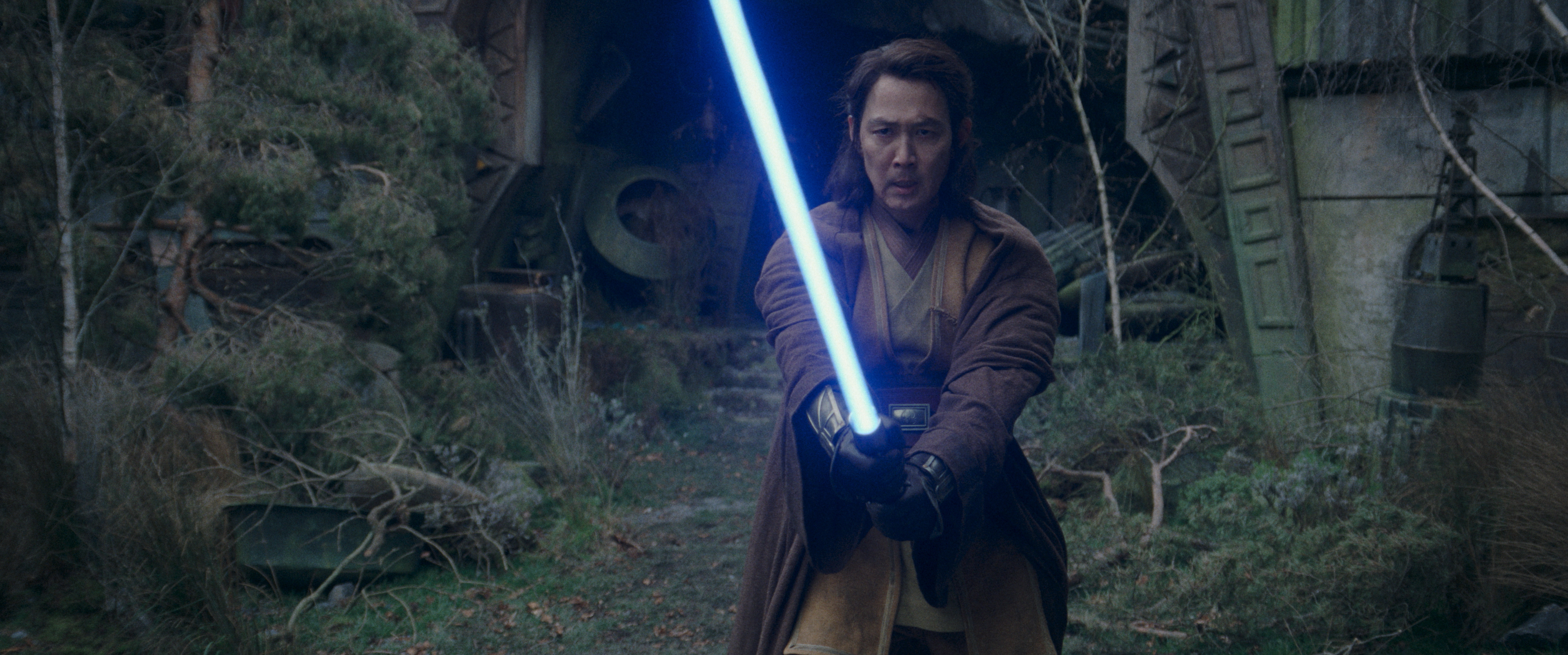
As a long-time fan of Star Wars, I can’t help but feel deeply disappointed by Disney’s latest offering, The Mandalorian spin-off, The Acolyte. Having grown up with the original trilogy and its messages of hope, redemption, and good triumphing over evil, I was excited to see how these themes would be explored in a new series. However, my expectations were dashed as I watched episode after episode of moral ambiguity and questionable character development.
The recently concluded Disney+ series, “The Acolyte,” part of the Star Wars universe, has received criticism for various reasons. While it’s not without flaws, the writing was subpar, acting left room for improvement, and production design fell short of expectations. However, a more significant concern arises: this production seems to deviate significantly from the essence of Star Wars. The creators appear to have misconstrued the core values and spirit that define this beloved franchise.
In the story “The Acolyte, ” the central theme revolves around two sisters, Osha and Mae, who grow up on a secluded planet under the care of a group of witches with the power to manipulate the Force. These witches are then discovered by a contingent of Jedi. Recognizing the twins’ latent abilities, the Jedi endeavor to bring them to Coruscant for further education. However, due to various miscommunications, an altercation ensues and the witches unfortunately meet their demise. Osha is subsequently taken to Coruscant for her training, while Mae, who was believed to have perished during the conflict, embarks on a personal mission to avenge her sisters and the deceased witches.
In “The Acolyte,” an unusual aspect emerges as it strives to convey that what’s considered good or evil, moral or immoral is subjective and depends on individual perspectives. The Jedi are portrayed as wrong for intruding upon the witches’ planet, yet their actions, driven by a belief in protecting potential threats, are not excusable despite their noble intentions. The audience is expected to sympathize with Mae’s desire for vengeance and her justification for murdering the Jedi, even though she takes innocent lives. Moreover, Osha appears to assume the role of protagonist by the series finale, following her cold-blooded killing of Sol. However, this presents a significant challenge as “Star Wars” has consistently presented clear distinctions between good and evil, rather than abstract concepts. This becomes especially crucial when dealing with the Force – “Star Wars'” fundamental element.
People’s use of this mysterious power leaves no gray area – you’re either connected to the Light or Dark Side with no middle ground. Regardless of your intentions, the Dark Side cannot be harnessed for good; it will ultimately corrupt anyone who embraces it. Qimir, for example, is not simply a Force user with distinct abilities, but rather someone drawing from evil to boost his power, inevitably leading to disastrous outcomes. Consequently, the Jedi are justified in opposing him. On the other hand, Osha’s decision to align herself with Qimir places her firmly on the side of darkness.
The show explores the concept that there’s no definitive line between good and evil, only varying degrees of gray, a notion that resonates with shows such as “Game of Thrones.” However, this theme doesn’t fit well with franchises like “Star Wars.” Even when series like “Andor” attempt it, they seem distinct from the rest of their respective universes. Nevertheless, “Andor” skillfully avoids criticism by minimally incorporating the Force into its narrative.
The Jedi, despite having imperfections, derive power from the positive side of the Force, consistently working towards combating darkness in the galaxy. Though they err, they remain a vital shield against greater evils. In the perspective of “The Acolyte,” there might be an attempt to abolish the concepts of heroes and villains. However, Star Wars’ universe is shaped by both sets of characters. Heroes such as Luke Skywalker and Obi-Wan Kenobi embody goodness, striving for a better galaxy and upholding personal ethics. They serve as beacons of hope amidst adversity, never resorting to their enemies’ methods, thereby amplifying the significance of their triumphs.

The Acolyte and the unforgiveable lack of hope
Another major issue with “The Acolyte” arises from the absence of a prevalent hopeful theme, which is a significant element in the “Star Wars” saga as a whole.
The essence of “Star Wars” can be encapsulated in a single word: optimism. This belief that things will improve, that righteousness prevails, and that darkness can be vanquished is evident from the get-go, as shown in the original film’s title change to “A New Hope.” The protagonists instill hope into a forlorn galaxy, managing to outwit the all-powerful Empire and obliterate its devastating Death Star.
In the entire original Star Wars trilogy, hope never fades for the protagonists. Even after Vader’s destructive actions, Luke clings to the belief that his father still holds redeemable qualities, and that they can save both him and the galaxy. This hope is proven true in the end. The Empire Strikes Back, known for its darker tone, concludes with a scene brimming with optimism. Though Luke loses a hand, Han Solo is captured, and the Rebel fleet is stranded in space, Luke and Leia gaze out into the vast expanse, determined to surmount these challenges and continue their fight for a brighter tomorrow.
Throughout “The Phantom Menace,” the sense of unity between Gungans and Naboo prevails as they stand together in peace against a common adversary (Star Wars: The Phantom Menace). In “Attack of the Clones,” the marriage of Anakin and Padme, on the brink of a galaxy-wide conflict, symbolizes a strong conviction that optimism remains, no matter how dire the situation may seem (Star Wars: Attack of the Clones). Even during the dismal times of “Revenge of the Sith,” the movie concludes with the infants Luke and Leia being given to their respective families, demonstrating that despite the galaxy’s descent into a dictatorship, hope continues to thrive somewhere within it.
As a gamer, I can relate to the ups and downs of a challenging game. Disney’s movie productions may not always excel at managing setbacks, but they surely deliver some memorable moments that keep me engaged. For instance, when Leia in “The Last Jedi” insists they have what it takes to rebuild the Resistance, despite their crushing defeat. Or, in “Rogue One,” when the heroes make the ultimate sacrifice to preserve the beacon of hope. These instances remind me of the moments in a game where, even after a tough loss or setback, I’m motivated to keep going and give it my all for the greater cause.
In “The Acolyte,” the concept of redemption and overcoming evil is absent. This is partly due to the show’s attempt to gray the moral lines, making it unclear who the true villains are. Additionally, the treatment of characters in the series contributes to this lack of theme. While Luke gave Anakin a chance at redemption despite his past terrorizing acts, leading to the downfall of Emperor Palpatine’s greater evil, “The Acolyte” portrays Osha differently. She refuses to forgive Sol for what he believes were good intentions and ultimately kills him. The show justifies her actions, while Sol is painted as completely wrong. Similarly, Mae, driven by revenge, kills Jedi without suffering any consequences or expressing remorse. Characters like Torbin are shown that their only means of atonement is through death, with no hope for redemption.
In a galaxy far, far away, this storyline presents a moral ambiguity that seems incongruous, as it never results in any satisfying resolution. The audience is left to ponder that each situation’s outcome depends on the perspective from which it is viewed rather than an absolute solution being reached. Although some of this could be attributed to weak writing, it sets the foundation for the plot and remains a consistent theme throughout the series.
As a longtime fan of the Star Wars universe, I firmly believe that certain themes are integral to its essence and success. Having grown up with these stories shaping my childhood, I can’t imagine a Star Wars series without the presence of those key themes.
Read More
- Clash Royale Best Boss Bandit Champion decks
- Vampire’s Fall 2 redeem codes and how to use them (June 2025)
- Mobile Legends: Bang Bang (MLBB) Sora Guide: Best Build, Emblem and Gameplay Tips
- Best Hero Card Decks in Clash Royale
- Clash Royale Furnace Evolution best decks guide
- Best Arena 9 Decks in Clast Royale
- Dawn Watch: Survival gift codes and how to use them (October 2025)
- Clash Royale Witch Evolution best decks guide
- Wuthering Waves Mornye Build Guide
- ATHENA: Blood Twins Hero Tier List
2024-07-20 10:41